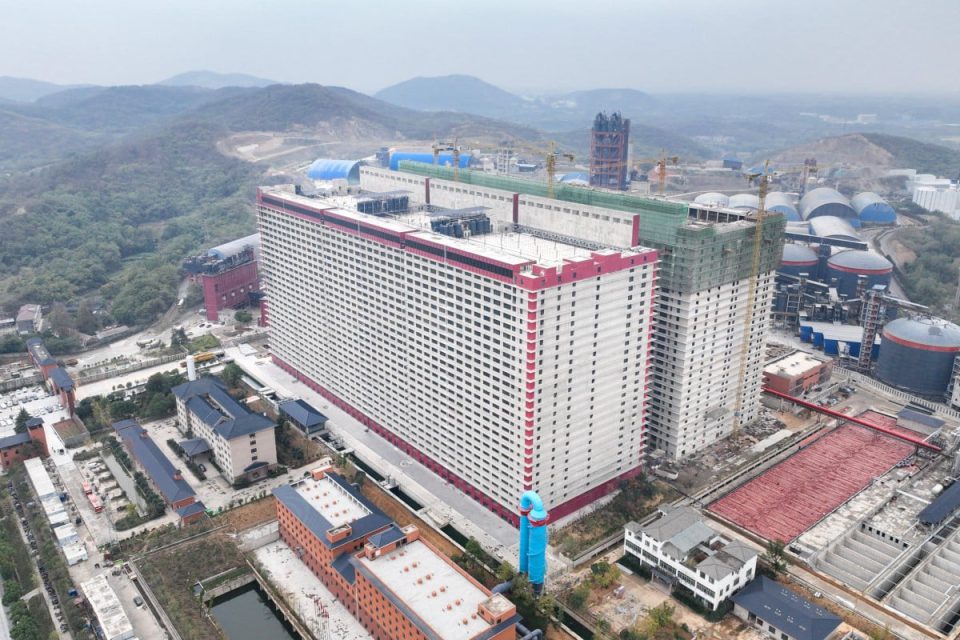China’s High-Rise Pig Farms Lead Smart Farming Revolution to Boost Food Security and Pork Production
China is revolutionising its approach to livestock farming with the rapid rise of skyscraping pig farms, signalling a bold leap into smart agriculture amid growing concerns over food security, climate change, and global supply-chain instability. One standout example is a towering 26-storey facility in Ezhou, Hubei province. At first glance, this high-rise structure could be mistaken for a luxury apartment complex, with its air-conditioned rooms, dedicated exercise spaces, and panoramic views. But its occupants are not city dwellers—they’re pigs, housed and raised in one of the most technologically advanced smart farms in the world.
These vertical pig farms are gaining momentum across China, representing the forefront of a national push toward smart farming. The initiative is driven by Beijing’s commitment to bolster food production to feed the nation’s 1.4 billion people while navigating increasingly turbulent geopolitical tensions and environmental disruptions. These towering facilities are equipped with cutting-edge technology, integrating artificial intelligence, Internet of Things (IoT) devices, big data analytics, and cloud computing to optimise every aspect of pig farming—from feeding and temperature control to health monitoring and waste management.
The strategic support for high-rise livestock facilities began in earnest in 2019, when China’s Ministry of Natural Resources and the Ministry of Agriculture and Rural Affairs officially authorised the use of multistorey buildings for farming. This policy shift, reinforced by the government’s 2024 “No 1 central document” on rural development, promotes intensive, industrialised agriculture as a key to food security. With this foundation, China’s smart-livestock-farming industry is projected to reach a value of 47.7 billion yuan (US$6.52 billion) by 2026, according to market research from LeadLeo.
The Ezhou facility, which opened in October, showcases the capabilities of smart farming on an unprecedented scale. A second identical structure is under construction next door, and together they are expected to produce 1.2 million pigs annually. Despite their enormous output, each floor requires only a small team of about a dozen workers, thanks to automation and intelligent management systems. Similar high-rise pig farms have already been established in other provinces, including Sichuan, Guangdong, and Shandong.
China is the world’s largest producer and consumer of pork, with the meat accounting for 60 to 70 percent of total meat consumption. The country consumes nearly 700 million pigs annually, representing about half the global pig population. In 2022, China produced approximately 55.4 million tonnes of pork, aligning with targets set in the 14th five-year plan, which aims for an annual output of 55 million tonnes and a self-sufficiency rate of 95 percent.
Smart farming also offers a practical solution to China’s growing labour shortage in agriculture. As fewer young people are willing to take on physically demanding farm work, automation and intelligent systems make livestock farming more appealing and manageable. According to Professor Zhang Shuai of China Agricultural University, this shift is not just a national trend but a global necessity. He argues that the future of farming must be less labour-intensive and more technologically driven to attract the next generation of agricultural workers.
Despite these advancements, high-rise pig farms are not without their critics. Zhang warns that while the Ezhou project is technologically impressive, its sustainability and scalability must be carefully evaluated. One major concern is waste management. Processing the vast quantities of manure produced in such facilities demands significant land resources and robust environmental safeguards, which can limit where these farms can be realistically built. Disease control is another major hurdle. Even with advanced air-filtration systems, airborne diseases can spread rapidly in densely populated facilities, posing health risks to animals and potentially threatening supply chains.
Zhang advocates for a moderate-scale farming approach that prioritises sustainability and ecological recycling. He emphasises the importance of environmentally friendly practices and well-balanced livestock production models that can be adapted across diverse regions and environments.
As China continues to lead the charge in agricultural innovation, its model of vertical pig farming may reshape the global food production landscape. But with great promise comes the need for caution, ensuring that rapid advancement does not outpace environmental and health considerations.
For video news, visit our YouTube channel THE OLIGO.

